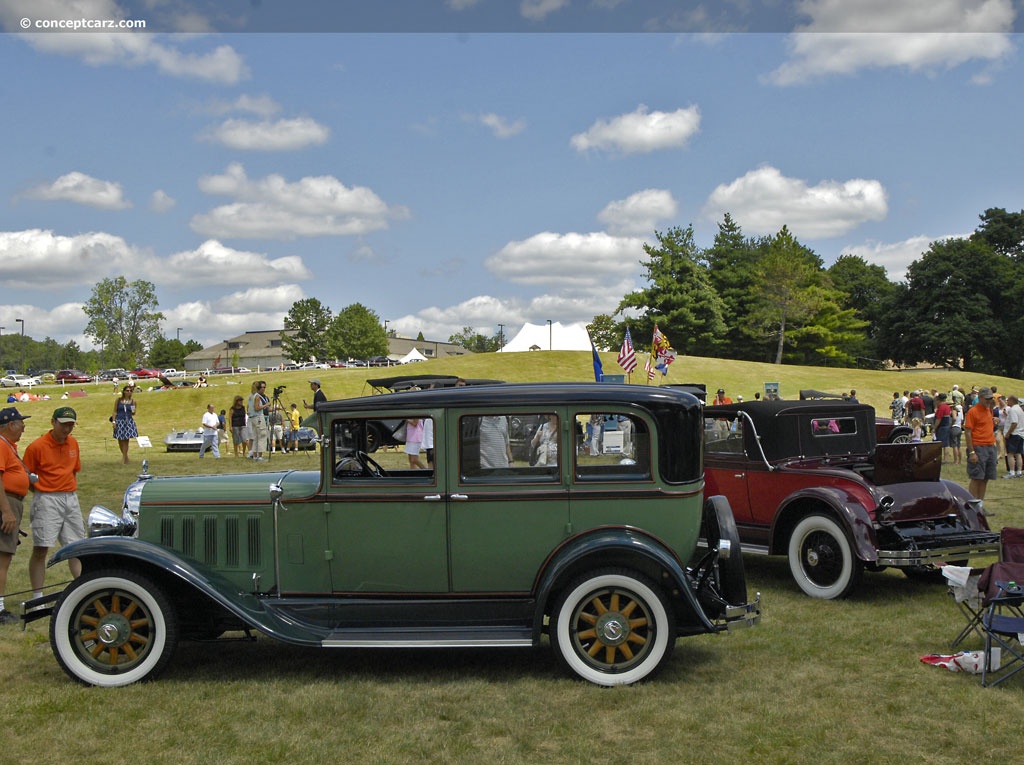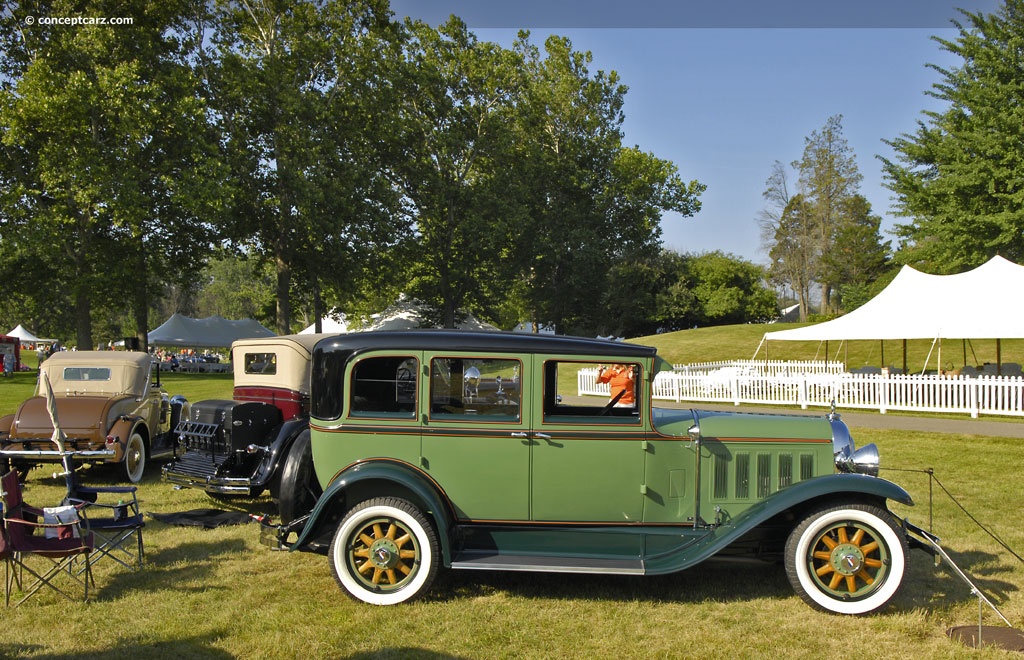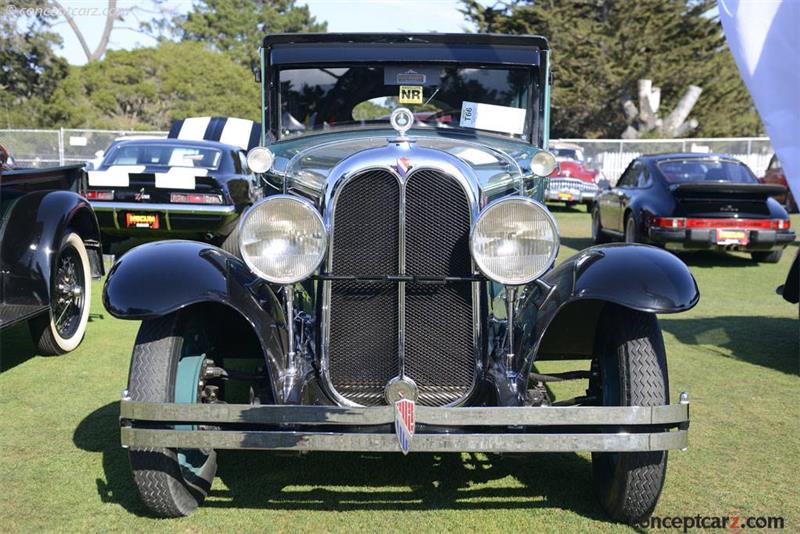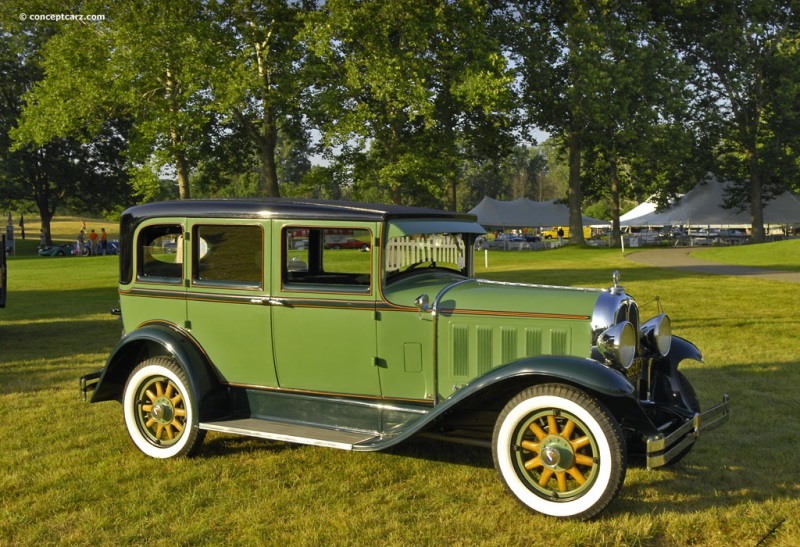Edward M. Murphy of the Pontiac Buggy Company began producing Oakland cars in 1908. He was joined by Alanson P. Brush, who had been responsible for the design of the early Cadillacs, eventually leaving to work as an engineering consultant in Detroit. Brush had shown Murphy his design for a vertical two-cylinder engine that rotated counterclockwise that Cadillac had rejected. Murphy acquired the idea and organized the Oakland Motor Car Company in the summer of 1907. The first Oakland motor cars were ready for display by January 1908. By this point, Brush had left Pontiac, Michigan, and met Frank Briscoe, who financed the single-cylinder Brush Runabout of Detroit, Michigan. 
Landaulet Sedan by Fisher
View info and historyThe Oakland motor car sold poorly, with 278 examples built in 1908. For the following year, the company went in a different direction, offering a line of four-cylinder models that developed 40 horsepower and were backed by sliding gear transmission. Unfortunately, Mr. Murphy passed away suddenly in September of that year at the age of 44. Just five months earlier, he had met with William C. Durant, and Oakland had become part of Durant's General Motors conglomerate. Murphy had sold half of the company to Mr. Durant, and after he passed away, GM acquired the remaining rights to Oakland. Within the General Motors hierarchy, the Oakland marque was positioned as the entry-level brand, below Oldsmobile, Buick, and Cadillac. Chevrolet was acquired in 1917. After GM assumed operations of Oakland, production was relocated to the factory that manufactured Cartercar in Pontiac, Michigan, where the Oakland Model 40 was produced. By 1910, the Oakland vehicles were powered by four-cylinder flathead engines with five available wheelbase sizes. The Oakland Six joined the lineup in 1913 and was followed by the Model 50 in 1916, equipped with a 365 cubic-inch flathead V8 engine sourced from Northway Motor and Manufacturing company. Production of the Model 50 lasted from 1915 through 1917 and was offered solely as a seven-passenger Touring sedan rested on a 127-inch wheelbase and priced at $1,600. 
Landaulet Sedan by Fisher
View info and historyDuring the early 1920s, quality control had become problematic, so when Fred Hannum became the new General Manager in 1921, he established a consistent production schedule that resolved many of the quality issues. Both Chevrolet and Oakland shared the GM A platform. By this point, Oakland was exclusively powered by six-cylinder power, with a wheelbase size of 115 inches from 1921 through 1923. A 113-inch wheelbase was used from 1924 through 1927 before growing to 117 inches in 1928. A variety of body styles were offered, including a tourer, roadster, coupe, landaulet, coupe, and sedan during this time. The lower-priced Pontiac 'companion car' joined General Motors in 1926, and it was an immediate success, quickly overshadowing the more costly Oakland. Both had six-cylinder power with a wide range of body styles, but the lower-priced Pontiacs were more appealing, eventually leading to the demise of Oakland in 1931. During its production lifespan, over one million Oakland vehicles were produced.Oakland produced 50,693 vehicles in 1929. The 212 cubic-inch six-cylinder engine had a 3.4-inch bore and 4.3-inch stroke and offered approximately 68 horsepower at 3,000 RPM, and was backed by a three-speed transmission. The sport roadster, sport phaeton, coupe, and two-door sedan were priced at $1,145, the brougham was $1,195, and the convertible listed for $1,265. The Landau Sedan was priced at $1,375, the Special Sedan at $1,320, and the sedan at $1,245.
by Daniel Vaughan | Oct 2021

Landaulet Sedan by Fisher
View info and history

Landaulet Sedan by Fisher
View info and history
by Daniel Vaughan | Oct 2021
Oakland
Similar Vehicles
Similarly Priced Vehicles
1929 Oakland All-American Six Vehicle Profiles
Recent Vehicle Additions
Performance and Specification Comparison
Price Comparison
Related Automotive News

RAM TRUCK TO SHOWCASE OFF-ROAD TRUCK LEADERSHIP AT 2016 OVERLAND EXPO
Overland Expo to host Ram Truck press conference and owner clinic
Fresh off their Chicago Auto Show unveiling, new 2017 Ram Power Wagon and Ram 2500 4x4 Off-road pickups will make their first Arizona appearance at the Overland Expo in Mormon Lake,...

CHEVROLET'S ICONIC BOWTIE CELEBRATES 100TH ANNIVERSARY
DETROIT – Chevrolets globally recognized bowtie celebrates its 100th anniversary this year with 25 product launches helping the symbol find new roads around the world despite an origin that is still uncertain.
In 1913, Chevrolet co-founder William...

JEEP® AT THE 2013 GENEVA INTERNATIONAL MOTOR SHOW
European premiere of the new Jeep® Grand Cherokee 2014 the most awarded Large SUV ever has been renewed in terms of internal and external design, technological contents and performance thanks to the new eight-speed automatic transmission
European...

BMW at the NAIAS Detroit 2013
Captivating looks laced with premium quality and groundbreaking innovations are the standout features of the models charged with continuing the success of the BMW brand into the future. The NAIAS 2013 in Detroit will see BMW presenting visitors with...

VOLKSWAGEN CLAIMS BEST HIGHWAY FUEL EFFICIENCY, WITH SEVEN MODELS THAT ACHIEVE MORE THAN 40 MPG
New Jetta Hybrid earns EPA fuel economy rating of up to 48 mpg the first compact hybrid available with a turbocharged engine
Herndon, VA - With EPA estimated fuel economy ratings of 48 mpg on the highway, 42 mpg in the city, and a com...





















